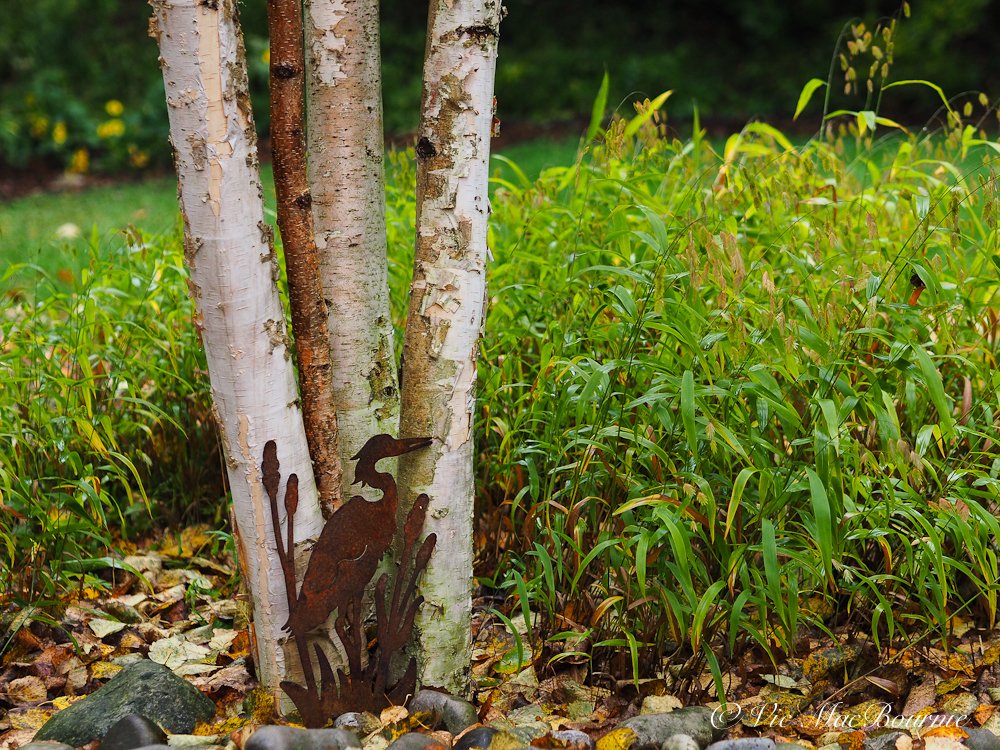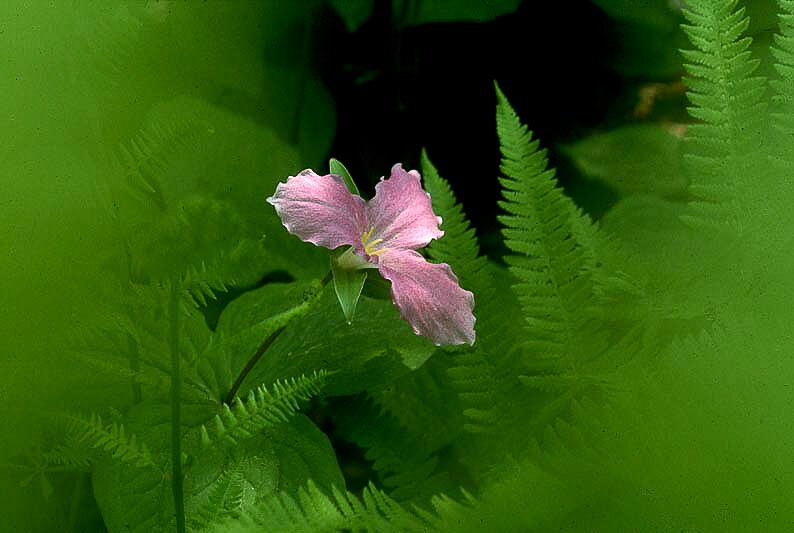Best ground covers for a backyard woodland design
Ground covers are an integral part of a Woodland Garden. Ferns form the backbone of our garden both in the front and back yards, but there are many others. Here are three of my favourite ground covers that I use in my garden.
Three of the best ground covers for the shade garden
I once had a friend promise me some pink trilliums from her parents’ garden.
I knew back then that white trilliums turn pink as they pass their prime and begin going into decline.
You may ask, ‘what does this have to do with ground covers’?
Let’s just say promises of great things are not always what they appear to be, especially when it comes groundcovers.
So the promise of rare pink trillium plants was enticing, but not really what it appeared to be.
In the end, I took the pink trilliums knowing that next spring they would emerge as glorious white trilliums in our landscape eventually turning pink before disappearing again.
So what are the best ground covers?
The best ground covers are the ones that deliver what you need in a specific area of your garden.
Proper research will help guide you to the best plant to achieve the desired effect, rather than an-out-of-control planting that quickly takes over the entire garden.
Consider native plants whenever possible.
Ferns are ideal for shady places and sweet woodruff is always an ideal woodland addition.
Although not native, pachysandra can be an all-around proven winner in most gardens.
Gardeners know, however, that promises can be good or bad depending on how you perceive them. The very nature of a quick-spreading plant makes it a potential problem. Traditional groundcovers spread fast and are considered by many to have aggressive tendencies in our low-maintenance landscapes.
Making the right decision can be the difference in reducing the amount of work and adding to your burden in a big way.
Trying to pull out a huge mass of rapidly expanding, deep-rooted groundcover plants is no fun at all.
Looking for more information on ground covers? Please check out my other posts on ground covers I use in the woodland garden.
• Bunchberry ideal ground cover
• What is the easiest ground cover to grow?
• Creeping thyme as a ground cover
Backyard tips for using ground covers in your landscape
Word of warning, don’t make a mistake here and choose the wrong plant to use as your ground cover.
Many years back, I read a book about the value of using ground covers in your garden design. One of the most important lessons learned from it was to plant several different ground covers and let them compete with one another for supremacy.
It’s a lesson in landscape designs I have followed to this day. The results depend on several factors, including soil type and location.
In most cases, however, there is no clear winner. The ground covers live together in harmony battling for superiority and weaving a tapestry of texture and colour that gives variety to the garden and an informality that seems at home in the woodland or shade garden.
Here are three of my favourite ground covers for our woodland landscape design… there are more, lots more.
This highly informative poster created by Justin Lewis is best viewed on a tablet or desktop.
Ferns are perfect for the woodland garden
Coming in as number one in my garden because they are so darn perfect for a woodland garden is the humble fern. Although the massive, and some would say aggressive ostrich fern (link to proven winners website), dominates most of my gardens in both the front and the back, there are other ferns that make their home here too.
Want more information on creating a fern garden, check out my full post here.
Our ostrich ferns could not be more at home here. They dominate a large “wild” area in a corner of the garden once covered in a work-intensive lawn (link to earlier post about eliminating grass) that I am not sad to see go. Now, the ferns that can grow three-feet tall and spread out three to four feet wide, blanket the ground beneath in a lovely shade and provide perfect habitat for many of our wild critters.
In fact, It’s not uncommon to see a doe park her fawns on the edge of the ferns where they can hide in safety all day. A fox has been known to poke its head out from the thicket of ferns and reptiles, chipmunks and birds are often seen emerging from the fern glen.
In fall, the ferns turn a lovely shade of beige and become the landing zone for many of my leaves from the front garden. All winter, they serve as the ideal location for birds to root around for over wintering insects. I’ve seen wild turkeys working their way through the dead ferns snacking on a host of insects, seeds and berries.
In keeping with the woodland layering approach, understorey trees (my earlier post on building a woodlandand) shrubs grow up through the ferns. Several Redbuds (single and multi-trunk), a multi-trunk serviceberry, two azaleas and several dogwoods (both Cornus Florida and Kousa) as well as a variegated Curnus Mas are just a few of the understory trees that are at home among the ferns.
Other ferns in the garden include:
The Japanese-painted fern with its silvery fronds hi-lighted by red stalks is simply an outstanding performer in shaded areas where it can really put on a show. It’s not aggressive at all in my garden, but I can split them to add to their numbers if I want to have more and more. And believe me I do. Mine are in the front garden near a bird bath where they are happy in deep shade and are watered regularly when I top up the bird bath. These ferns perform best when they are kept moist.
The Ghost fern. I have only one located in our Japanese-inspired part of the garden, but it can be a show stopper. Larger than the painted fern but apparently a relative. Its soft, very light green colour gives it an almost luminescent appearance in shade, which is where it likely gets its name.
Maidenhair ferns are my absolute favourites. Their delicate fronds and black wirey stalks make these a must-have in any woodland. Although they can be difficult to grow, given the right conditions in a woodland garden, they will thrive. They are perfect in a Japanese-inspired garden. It’s important to note that they need plenty of shade and water. I have mine right up next to some granite boulders where their delicate fronds juxtapose with the heavy texture of the moss-covered rocks. They are also close to a birdbath that reminds me to keep them well-watered.
There are more we’ll get to but that’s a good start.
Any of the native groundcovers listed in the image above, are better than the following non-native groundcovers listed below. If you can use native groundcovers and they work in your area, always choose native over non-native.
In saying that, the following two groundcovers could work in your area as well.
Sweet Woodruff ideal for dry shade garden
The delicate, whorled foliage of Sweet Woodruff together with its early-spring white flowers make this a great ground cover for the woodland garden. It is not native and some would consider it aggressive, but it is not aggressive in my area and in the conditions where I grow it. I have mine under a Crimson Maple competing for space with trilliums, Ostrich ferns and hostas. It spreads nicely but I would not call it aggressive.
Pachysandra is strong performer any landscape design
So this one can be a little aggressive and certainly not a native to Canada and the United States. It’s best not to let it go unchecked by solid barriers.
It’s aggressive nature can be good or bad depending where you are putting it and how you want to use it. It’s pretty common, but it provides a 3- to 4-inch-high ground cover that can take some sun, has delicate white flowers in the spring and can cover ground fast and efficiently. Make sure you have a boundary so it and you know where its limits are. I use it in my front garden where it forms the main ground cover replacing grass that once covered our front lawn. Although many gardeners use it as a sole ground cover under evergreens or other large trees, I like to grow larger woodland plants up through the pachysandra, including hostas, native columbine, ferns, (including Japanese painted and maidenhair), Jack in the pulpits, solomon’s seal, epimedium, grasses and sedges.





